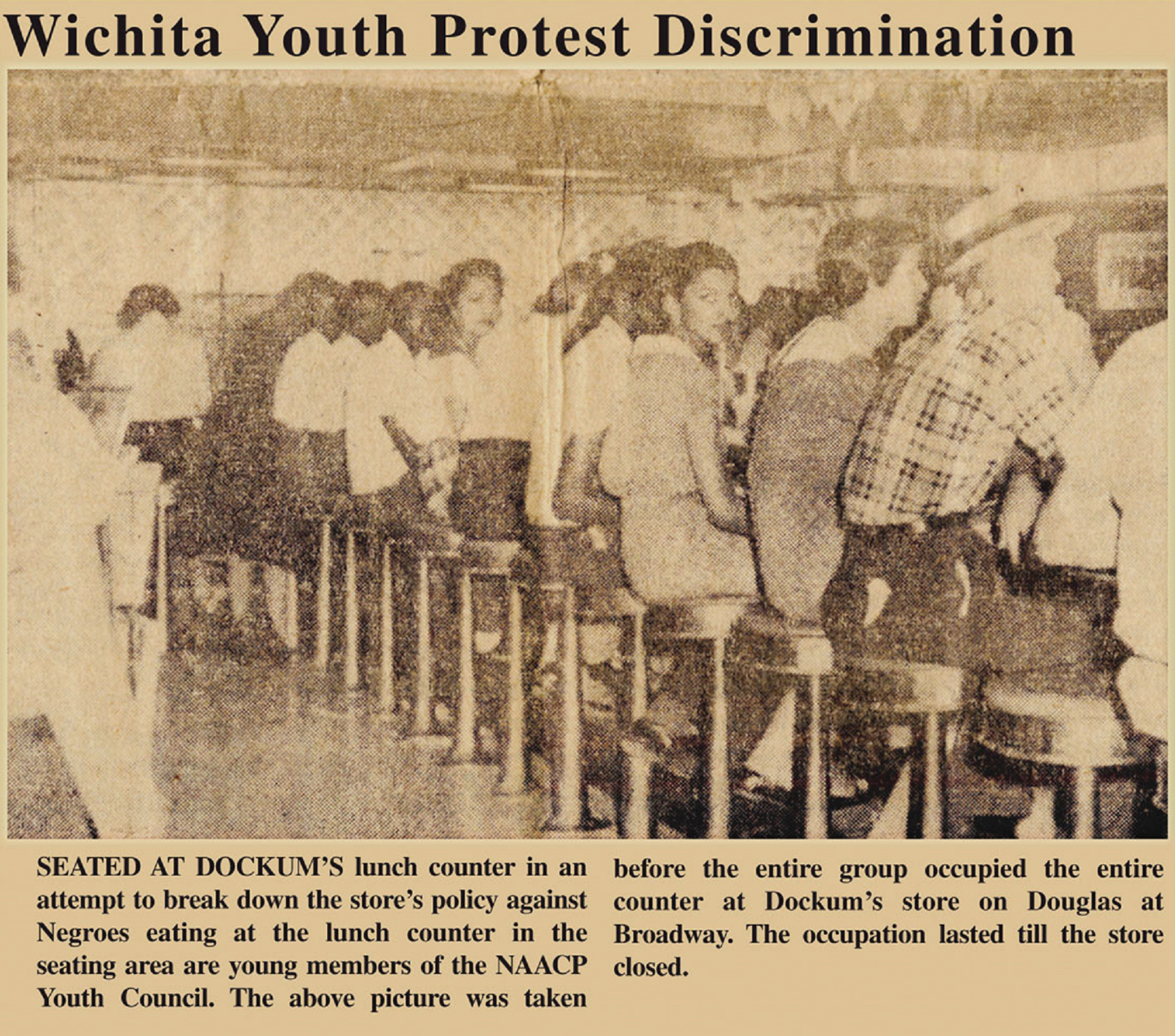The Dockum Drug Store Sit-Ins occurred in Wichita, Kansas, between July 19 and August 11, 1958. Ronald W. Walters, a local college student who was at the time president of the Wichita National Association for The Advancement of Colored People (NAACP) Youth Council, organized the sit-ins at the Dockum Drug Store along with his 19-year-old cousin, Carol Parks-Hahn, who was treasurer of the Council. The sit-ins protested the Dockum policies that barred African Americans from being served at its lunch counter.
On July 19, 1958, Walters, Parks-Hahn, and ten other students entered the Dockum Drug Store one by one until all the lunch counter seats were taken. Parks-Hahn ordered a Coca-Cola from a waitress, who was about to serve it to her but pulled it back when she realized that the store policy banned service to African Americans. The students told the waitress they intended to stay until they could be served like everyone else. Hours would pass while students remained at the lunch counters. The waitress closed the Blacks-only fountain, leaving the whites-only fountain open. When the store closed for the night, the students left.
A few days later, the student protestors returned to the lunch counter, where they sat for an hour without getting service that day. As the second sit-in occurred at Dockum, 20 White segregationists began taunting and threatening the protestors. By the time the segregationists gathered around the lunch counter, one of the students called the police, who arrived 15 minutes later. The police searched the store and said they would not intervene between the groups since no disturbances had occurred. Fearing violence if the sit-ins continued, the store manager begged the police to act, but they refused to intervene against the Black protestors or the White segregationists.
Despite the hostility they faced, the students continued to come in day after day and sit at the lunch counters. As the sit-in incident became more well-known in the Wichita community, White college students from Wichita State University joined them. While the local daily newspapers, the Eagle and the Beacon, refused to publish information about the sit-ins to avoid getting publicity for the demonstrations, the local Black-owned newspapers, the Enlightener and the Mid-West News-Press, provided regular accounts to their readers.
The Wichita branch of the NAACP applauded the students’ efforts but did not participate because the national office did not sanction sit-ins at the time. On August 11, 1958, the store manager ended the protests by saying, “Serve them. I’m losing too much money.” Chester A. Lewis, attorney and head of the Wichita NAACP, called Walter Heiger, the vice president of the Dockum Drugstore Chain, to confirm the new integration policy. Heiger then instructed all Dockum stores to provide service to people of all races. With his decision, The Dockum Drug Store Chain was officially desegregated.
Forty years after the sit-ins occurred, in 1998, a 20-foot-long, $3 million-dollar bronze sculpture was created to commemorate the site of the successful sit-in. The sculpture depicted the protest, showing a lunch counter and demonstrators.
Do you find this information helpful? A small donation would help us keep this available to all. Forego a bottle of soda and donate its cost to us for the information you just learned, and feel good about helping to make it available to everyone.
BlackPast.org is a 501(c)(3) non-profit and our EIN is 26-1625373. Your donation is fully tax-deductible.
“The Dockum Drug Store,” The Wichita Eagle, https://web.archive.org/web/20221127171026/https://www.kansas.com/news/local/article269030792.html; “The Dockum Drug Store,” Global Nonviolent Action Database, https://nvdatabase.swarthmore.edu/content/wichita-students-sit-us-civil-rights-1958; “The Dockum Drug Store,” Visit Wichita, https://www.visitwichita.com/blog/post/dockum-drugstore-sit-in-why-it-matters-to-wichitas-rich-cultural-history/.
Your support is crucial to our mission.
Donate today to help us advance Black history education and foster a more inclusive understanding of our shared cultural heritage.

